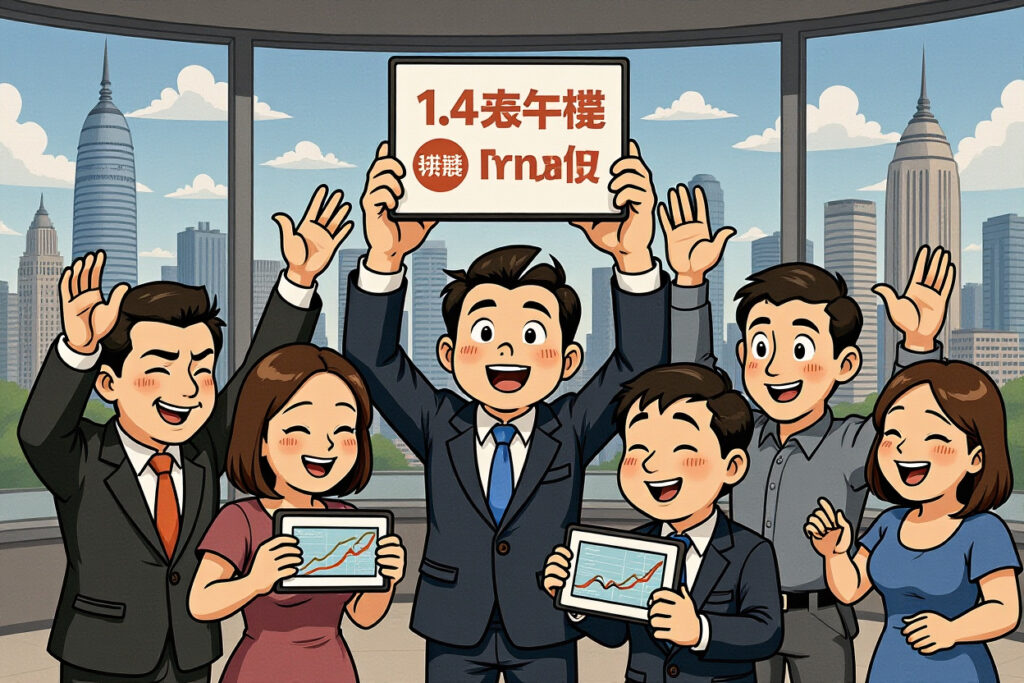Chinese Semiconductor Leader SMIC Reaches New Milestone
Shares of Semiconductor Manufacturing International Corporation (中芯国际, SMIC) surged to a record high of RMB 129.83 per share on September 22, continuing a robust upward trend that began earlier in the week. This performance underscores the growing strength and investor confidence in China’s semiconductor sector, which has seen the Shenwan Semiconductor Index rise nearly 4% in a single day and accumulate an impressive 45% gain since the start of the year.
The broader semiconductor segment also displayed notable strength, with companies like Zhongke Lanxun (中科蓝讯), Juchen Co (聚辰股份), Runxin Technology (润欣科技), and Haiguang Information (海光信息) each rising over 10%. This collective momentum highlights how the Chinese semiconductor sector is capturing attention from domestic and global investors alike.
Key Market Drivers and Recent Developments
Upcoming IPO and Corporate Expansion
Market sentiment received a further boost from the upcoming IPO of Moore Threads (摩尔线程), scheduled for review on the STAR Market on September 26. Founded in 2020, Moore Threads focuses on full-feature GPUs and aims to provide accelerated computing infrastructure and AI-driven solutions globally. This move is seen as a significant step in strengthening China’s high-tech ecosystem and exemplifies the innovative drive within the Chinese semiconductor sector.
Strategic Announcements from Industry Leaders
At the Huawei Connect 2025 conference, Huawei’s Rotating Chairman Eric Xu (徐直军) outlined the company’s roadmap for its Ascend chip series, a critical component of China’s AI and computing ambitions. The plan includes:
– Ascend 950PR chip launch in Q1 2026, followed by Ascend 950DT in Q4 2026
– Ascend 960 scheduled for Q4 2027
– Ascend 970 expected in Q4 2028
These developments signal Huawei’s long-term commitment to advancing China’s semiconductor capabilities, reducing external dependencies, and supporting the nation’s digital transformation.
Policy Support and Trade Investigations
Anti-Dumping and Anti-Discrimination Measures
On September 13, China’s Ministry of Commerce announced it was initiating an anti-dumping investigation into analog chips imported from the U.S. and launched a separate probe into discriminatory U.S. practices against Chinese integrated circuits. A ministry spokesperson emphasized that U.S. restrictions not only harm China’s technological development but also destabilize the global semiconductor supply chain.
This assertive regulatory stance is part of a broader strategy to protect and promote domestic industry growth, a recurring theme in the expansion of the Chinese semiconductor sector.
Domestic Substitution Gains Momentum
Progress in Equipment Localization
According to a 2024 report from Headway Research (头豹研究院), Chinese semiconductor equipment makers have achieved a 35% localization rate, with significant advances in stripping, cleaning, and etching equipment. Progress has also been made in CMP, heat treatment, and thin-film deposition, though areas like metrology, lithography, and ion implantation still rely heavily on imports.
The report projects that the domestic equipment localization rate will reach 50% by 2025, reducing dependence on suppliers from the U.S., Japan, and the Netherlands.
Long-Term Growth Trajectory
SEMI estimates that China’s semiconductor self-sufficiency rate has grown from 14% in 2012 to 18% in 2022, with a forecast of 26.6% by 2027. Multiple analyst reports suggest that by 2025 or 2027, overall semiconductor localization in China could reach 25–30%, with even faster growth in equipment and materials.
Strong Fundamentals and Industry Performance
Global Sales and Memory Demand
The Semiconductor Industry Association (SIA) reported global semiconductor sales reached $620.7 billion in July 2025, a 20.6% year-on-year increase, marking 21 consecutive months of growth. The World Semiconductor Trade Statistics (WSTS) organization forecasts 2025 sales to hit $7.009 trillion, an 11.2% increase, with 8.5% growth expected in 2026.
Rising AI demand continues to drive memory chip prices upward. In mid-September, Micron Technology paused quotations for NAND flash and DRAM for a week, with market analysts predicting price hikes of up to 30%. According to Flash Market, a third-party analytics firm, DRAM prices have risen approximately 72% over the past six months.
Impressive Financial Results
Citing half-year financial disclosures, Zhongyuan Securities Research noted that the semiconductor sector achieved revenue of RMB 353.027 billion, a 13.34% year-on-year increase, and net profit of RMB 24.715 billion, up 27.16%. Second-quarter revenue reached RMB 188.429 billion (+13.87% YoY), with net profit of RMB 14.763 billion (+23.99% YoY).
Investment Outlook and Strategic Recommendations
Institutional Perspectives
Citic Securities (中信证券) believes that U.S. semiconductor restrictions are having a diminishing impact and may even accelerate China’s domestic substitution in AI and semiconductors. The firm recommends focusing on four key areas: wafer foundries, computing chip design, domestic equipment and components, and advanced packaging.
Huajin Securities (华金证券) points to increasing capital expenditure from cloud providers like Alibaba and growing demand for AI training and inference. The firm is optimistic about the entire domestic semiconductor产业链 (industry chain), including design, manufacturing, packaging, testing, and upstream equipment and materials.
Looking Ahead: Opportunities in a Growing Market
The continued rise of SMIC and the broader semiconductor index reflects deep-seated confidence in China’s tech future. With strong policy backing, accelerating innovation, and solid financials, the Chinese semiconductor sector is poised for sustained growth. For investors, this represents a compelling opportunity to engage with one of the world’s most dynamic and strategically vital industries.
As global demand for semiconductors continues to climb—driven by AI, IoT, and advanced computing—China’s push toward self-reliance is likely to yield significant dividends. Market participants should monitor policy developments, technological breakthroughs, and supply-chain shifts to capitalize on this evolving landscape.




